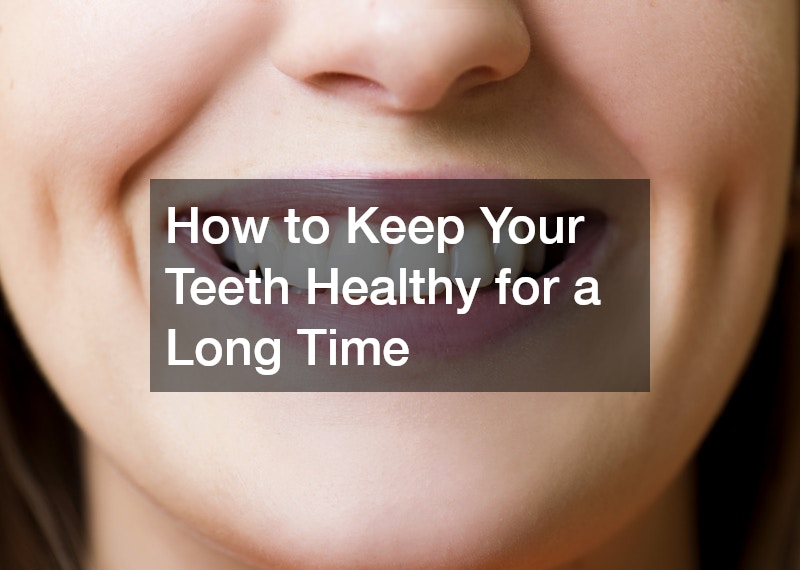
Maintaining healthy teeth for life involves more than brushing and flossing—it calls for a holistic strategy combining daily habits, professional care, nutrition, and overall wellness. By layering preventive routines with timely interventions and lifestyle adjustments, you safeguard your smile against decay, disease, and wear. This guide explores foundational principles and actionable tips to keep your teeth strong and vibrant from childhood into your golden years.
Working with trusted professionals anchors your oral health journey. A dedicated dentist builds a comprehensive plan tailored to your risk factors and goals, ensuring you receive personalized advice and interventions. Whether identifying early signs of enamel erosion or monitoring gum health, this ongoing relationship fosters accountability and growth. Regular visits also create opportunities to discuss concerns—from tooth sensitivity to cosmetic enhancements—enabling you to address issues before they escalate.
Understanding the Foundations of Oral Health
Preventive care serves as the first line of defense against dental problems. Simple daily practices—like brushing twice with a fluoridated toothpaste and cleaning between teeth with floss or interdental brushes—remove plaque biofilm before it calcifies into tartar. Establishing these habits early, especially under guidance from restorative dentistry experts when damage has already occurred, creates a stable base for lifelong health.
In addition to rigorous home care, having a reliable local dental office ensures prompt attention when unexpected issues arise. Quick access to professional cleaning, minor repairs, or adjustments prevents minor concerns from turning into major treatments. Choosing a conveniently located practice reduces barriers to care, encouraging you to keep appointments and sustain preventive momentum.
Some individuals incorporate alternative medicine approaches—such as herbal mouth rinses or oil pulling—to complement conventional routines. While these methods can support gum health and freshen breath, they should never replace mechanical plaque removal or professional cleanings. Consult your dental team before starting any adjunctive regimen to ensure compatibility with existing treatments and conditions.
Highly mineralized enamel requires not only cleaning but also cosmetic balance. A daily skin care mindset—focusing on gentle exfoliation analogies and moisturizing lips and oral tissues—translates well to your mouth. Using pH-balanced mouthwashes helps maintain a neutral environment that discourages acid attacks, similar to how proper moisturizers protect facial skin from external stressors and dehydration.
Building an Effective Daily Care Routine
Your morning routine sets the tone for the day. After breakfast, brushing removes food debris and neutralizes acids produced by bacteria. Incorporating an antimicrobial rinse before bed complements mechanical cleaning, reaching deep into gum pockets and between teeth. A toothbrush with soft bristles and an angled head ensures thorough coverage without abrading enamel or irritating gums.
Relying solely on at-home practices leaves gaps. Visiting local dentists twice a year provides professional scaling and polishing that eliminate stubborn deposits and stain build-up. Dental hygienists also offer tailored tips—such as the best flossing techniques or electric brush settings—to optimize your regimen and empower you to maintain results between visits.
When damage occurs—whether a small chip or advanced wear—restorative dentistry interventions like inlays, onlays, or bonding restore function and aesthetics. Early repair prevents bacterial invasion under cracks and distributes biting forces evenly. Trusting experienced practitioners for these precise procedures safeguards adjacent tooth structure and prolongs the life of your natural dentition.
Keeping a streamlined home care kit ready—including floss picks, interdental brushes, and a travel-size toothpaste—makes it easy to clean after meals on the go. Wrapping supplies in a small pouch prevents misplacement, and setting reminders on your phone encourages compliance during busy days. Consistency in these small acts compounds into significant long-term benefits.
Prioritizing Professional Checkups and Cleanings
Despite rigorous personal care, plaque can calcify into tartar in hard-to-reach areas. Visiting your local dental office for routine cleanings every six months removes this hardened buildup and detects early signs of decay or gum inflammation. During these visits, digital X-rays and intraoral cameras provide detailed insights into tooth roots, bone levels, and restoration integrity.
Building rapport with your dental team ensures that you’re comfortable discussing elective procedures—like addressing chipped enamel or reshaping minor imperfections—before they become larger cosmetic concerns. Early dialogue around emerging technologies, materials, and techniques helps you plan treatments that align with your budget, schedule, and aesthetic goals.
Scheduling periodic assessments of bite alignment and jaw function prevents TMJ disorders and uneven wear. Bite guards or minor orthodontic adjustments can redistribute forces, avoiding cracks, fractures, and sensitivity. Early intervention reduces the need for extensive restorative work down the line, preserving your natural tooth structure.
Nourishing Your Teeth from Within
What you eat profoundly influences your oral environment. Starting the day with calcium-rich breakfast food—such as low-fat yogurt topped with nuts or fortified oatmeal—supplies minerals that strengthen enamel and support saliva production. Saliva neutralizes acids and supplies protective proteins, making hydration equally crucial for oral defense.
Balanced meals that include crunchy fruits and vegetables—like apples, carrots, and celery—offer gentle, natural cleaning action while stimulating gum tissues and increasing salivary flow. Incorporating fibrous greens into lunchtime salads further promotes oral health by scrubbing teeth surfaces and delivering vitamin C essential for gum resilience.
Limiting sugary snacks and acidic beverages—especially between meals—reduces the frequency of acid attacks. When you do indulge, following up with water and chewing sugar-free gum containing xylitol helps clear sugars and buffer pH, maintaining a neutral environment protective against cavities.
Recognizing Signs for Restorative Intervention
Even with ideal habits, aging and genetics can lead to enamel wear, cracks, or large fillings failures. Recognizing when to seek restorative dentistry procedures—such as crowns, bridges, or implants—is critical to preventing infection or tooth loss. Common indicators include persistent sensitivity, visible cracks, or mobility.
Dental crown placement often follows root canal therapy or significant structural compromise. By capping the tooth with a durable material—ceramic or metal alloy—you restore chewing function, protect the underlying tooth, and achieve a natural appearance. Early crown placement prevents further breakdown and reduces the risk of needing extraction.
Exploring Cosmetic and Functional Enhancements
Beyond health, many seek to refine their smiles with cosmetic treatments. Injectable dermal fillers around the mouth can support facial volume and reduce lines that might accentuate gum display when smiling. Coordinating these procedures with dental work—such as aligning tooth position—ensures a harmonious aesthetic result.
Some patients turn to an appliance repair company approach—repairing old retainers or nightguards—to maintain orthodontic or bruxism protections. Well-fitting appliances safeguard against tooth grinding and aligner relapse, preserving both function and cosmetic enhancements between dental visits.
Embracing Holistic Wellness Practices
Interest in complementary approaches has grown, leading some individuals to seek alternative medicine solutions—like acupuncture for TMJ pain or herbal supplements to support gum health. While promising, these methods must be integrated with conventional care under professional supervision to avoid interactions or delayed treatment.
Mind-body practices such as stress reduction and meditation indirectly benefit oral health by lowering cortisol levels and reducing bruxism triggered by anxiety. Integrating short breathing exercises into your daily routine can alleviate muscle tension in the jaw and support overall well-being.
Integrating Overall Health into Oral Care
Your smile reflects your systemic health. Individuals engaged in medical weight loss programs often experience improvements in gum health as inflammation decreases. Reduced adipose tissue correlates with lower risk of periodontal disease, highlighting the interconnectedness of nutritional status and oral condition.
Similarly, skin care regimens that focus on collagen production and hydration can complement oral soft tissue health. Topical vitamin C serums and hydrating masks improve facial skin barrier function, reducing moisture loss in perioral tissues and supporting gum resilience.
Selecting and Sustaining the Right Care Team
Choosing skilled local dentists—ideally those who invest in continuing education and advanced technologies—ensures access to the latest techniques and materials. Look for practices offering digital impressions, laser therapy, and CAD/CAM restorations that streamline appointments and enhance precision.
Engaging an office furniture store that specializes in ergonomic dental chairs and operator stools can improve patient comfort and clinician posture, indirectly enhancing treatment quality. A well-designed operatory fosters efficient workflow and reduces the risk of clinician fatigue on long procedure days.
Final Tips for Long-Term Success
Maintaining dental health is an ongoing process of assessment, action, and adaptation. Keep a personalized care calendar—marking home care goals, professional visits, and nutritional check-ins—to stay on track. Celebrate small milestones, like a year without cavities, to reinforce positive behaviors.
Embrace innovation when warranted—whether incorporating new whitening methods or exploring emerging biocompatible materials—while weighing risks and benefits with your health team. With thoughtful planning, consistent habits, and the support of skilled professionals, you’ll enjoy a healthy, confident smile for decades to come.


